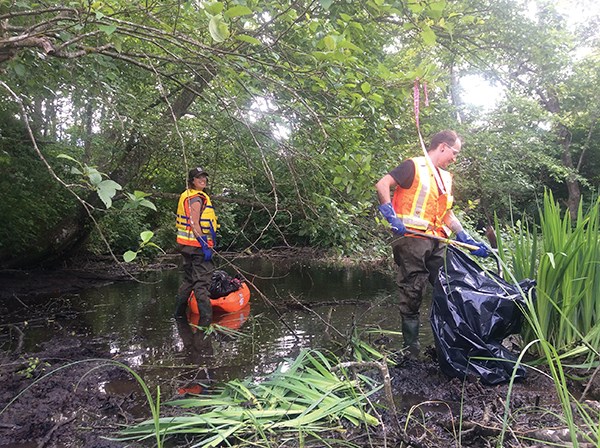Goldfish don’t conjure up the image of unwanted invaders, but it turns out they are becoming a big nuisance.
Some people are releasing them into the water system in the Sea to Sky Corridor when they do not want the fish as pets any longer.
There, the fish can survive and force out other species, says Clear Greenberg, the executive director for Sea to Sky Intensive Species Council (SSISC), who says the small yellow fish could eventually make their home in lakes around Squamish.
Earlier this month, goldfish were removed from Alta Lake and Millar’s Pond in Whistler.
“When they’re released into the environment, they can adapt and get a lot bigger,” she said.
Native to East Asia, goldfish are considered one of the world’s worst invasive aquatic species, with outbreaks reported in Australia, Alberta and Colorado in recent years.
They tend to thrive in the wild, often growing to the size of a pop bottle and living for more than 30 years.
The challenge for the SSISC now is to educate the public about aquatic animals and natural environments.
Goldfish are not the only invasive creature causing problems. Greenberg says they have been trying to follow up on reports from people reporting they have heard the American bullfrog, a predatory species that feeds off of other animals.
“They will actually prey on other frog species,” she said.
The bullfrogs are found in the Lower Mainland, so it would not be a stretch for them to make a home in the Sea to Sky, but at present the crews have not been able to find the bullfrogs.
“So far we haven’t heard anything,” she added.
Greenberg points to resources including a cell phone app that has information such as images and even the sounds that different types of frogs make.
Several plants also continue to pose problems in Squamish and other parts of the region.
Japanese knotweed is one source of trouble in the region. One of the challenges is that it has a strong, deep root system that makes it hard to eliminate without the use of herbicide.
“You’re never going to eliminate them with just the one treatment,” Greenberg said. “Year after year, there’s always a little bit that grows back.”
It typically persists from year to year, so the invasive species crews try to keep on top of outbreaks.
“If you can imagine, it’s like the tip of the iceberg,” she said. “It’s got an incredibly extensive root structure.”
Yellow flag iris is another nuisance that crews fought this summer. The SSISC had received additional funds to tackle the plant from the provincial and federal governments, Whistler and its community foundation.
“It changes the diversity of plants in the waterways,” Greenberg said.
Around 500 square metres of yellow flag iris were dug and hauled out by hand from lakes and waterways. The work also included planting nearly 600 native plants from areas where yellow flag iris was removed.
Greenberg said they found it in Squamish in areas such as MacDonald Place and Dryden Creek.
The work becomes all the more important because the plant does not have any natural enemies.
“It’s toxic, nothing eats it,” she said.
Another thing to watch for around Squamish, particularly in Brackendale and parts of the Squamish Valley, is giant hogweed, a tall and nasty plant with a sap that can burn or even cause blindness.
To combat these and other invasive weeds, a crew of nine worked through the spring and summer to apply treatments to sites. The council now is in the period of collecting and analyzing data to help inform plans for next year’s work in the field.
For more information on the council and its work, see www.ssisc.info.



